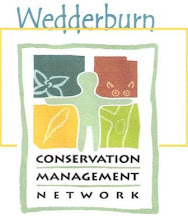Leaving the highway we proceeded down a bush track and
immediately began to notice many different and very active butterflies and
moths. We observed five different
species in the space of a few hundred metres. Of course we were keen to take
photographs of every different moth or butterfly, but they were so active we
soon gave up on this rather difficult task.
Spotting so many different insects compensated for the rather
uncomfortable weather conditions during an hour’s walk.
Increase in humidity and insects has also increased the
activities of birds and much entertainment can be had watching birds catching
insects on the wing. Some non-indigenous plants such as bracelet honey myrtle
are flowering in profusion near our garden.
We have counted up to ten different insects feasting on the nectar at
one time.
In the forest spring is certainly over, but a few late
flowering plants are still evident such as the locally common broom bush. With
no rain, the ground is dry and animal tracks are easily seen on the ground. As we set off on our morning walk we often
see tracks of goannas, birds, snakes, lizards and at present a lot of
hares. It’s always an interesting start
to contemplate what creatures have passed along this track since the last time
we were there.
Wedderburn Conservation
Management Network “Observers”


No comments:
Post a Comment